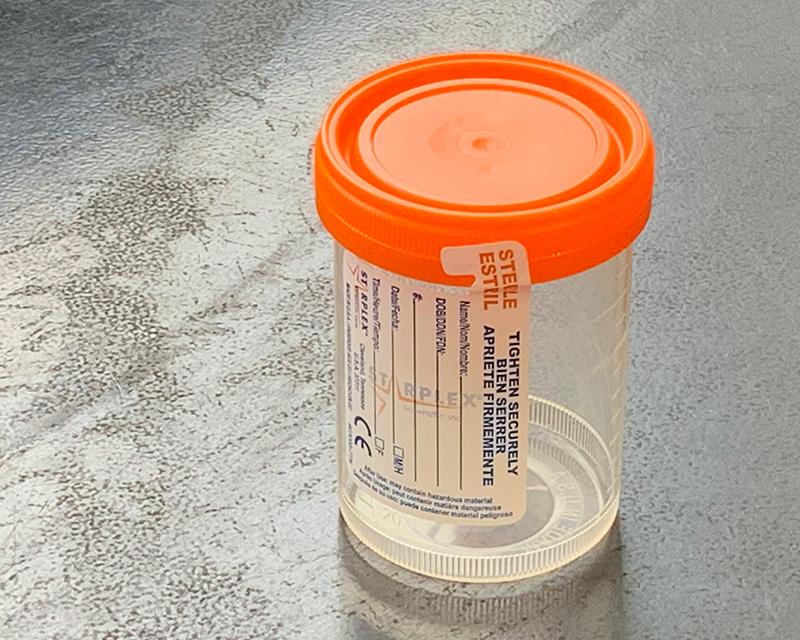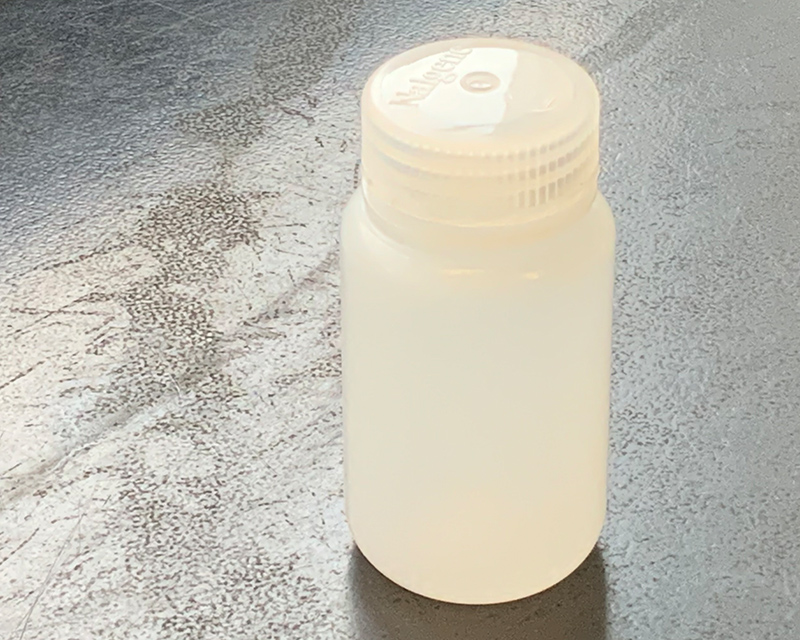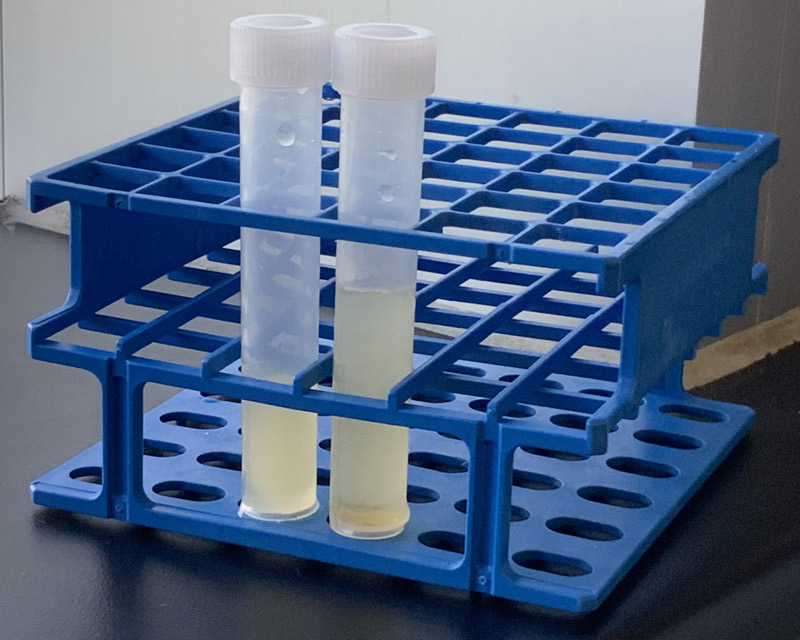Procedure for Collecting and Sending Urine Samples
These recommendations and procedures apply to the analytical tests performed by the CTQ as part of epidemiologic research and population surveys. Here, they deal with the sampling and sending of urine samples.
Preparation
When collecting urine samples, it is important to use the appropriate containers, because some of them may be contaminated with the analytes you want to measure.
The most commonly used containers are:
For those samples travelling a long distance, it is better to use smaller containers (tubes) made of polypropylene with a screw cap (ex.: Sarstedt # 60.550.100).
- When the sample must be divided in several aliquots (parts), use a plastic Pasteur pipette.
- The quantitative analysis of metals will require a pre-rinsing of the pipette with nitric acid 10 %, followed by a rinsing with demineralized water.
- In order to avoid contaminating your samples, please be careful when handling the material and the samples. Wearing nitrile gloves protects you and also allows to reduce the risk of contaminating the samples.
Please watch our video about the splitting of a sample into aliquots (duration: 44 sec)
Sampling
- When monitoring workers, the collection should be done after the worker has taken a shower and changed clothes. The sample is usually taken at the end of the working day or at the end of the shift.
- For the general population, we recommend the first urine of the morning.
- The amount of urine required is determined by the analytical requirements. Please contact us in order to determine the volumes.
Storage
- The urine is usually kept at 4 °C for a short period of time, such as a few days.
- In order to ensure the integrity of the urine samples for a longer period of time, it is recommended to freeze them at -20 °C.
Adding a stabilizing or preservative agent to the samples is usually not necessary. Otherwise, the CTQ will inform you.
Preparing the shipment
Establish an exhaustive list
A list of the samples included, on paper, must be joined to the shipment. Furthermore, the CTQ recommends to send a copy of this list by e-mail to the person responsible of projects at the CTQ ([email protected]). This list must contain the following information:
- The identification of all the samples;
- The dates of sampling and all other relevant information, such as age, place of sampling;
- The contact information of the applicant (address, mail, telephone, etc.).
Proper identifying of samples
Each sample must be identified with a self-adhesive label printed with a laser printer, in order to prevent the discolouring of the ink. The label must be resistant to freezing and biological matrices. A barcode identification should be the preferred option.
Choosing the right courier service
For the shipment of the samples, the CTQ recommends a fast, reliable courier service, that ensures a close tracking of the shipments and offers a proof of delivery (ex.: Federal Express, UPS, World Courier, etc.). The shipment of samples for reception the following day is usually difficult and expensive. Provided that all necessary precautions are taken (sufficient amount of refrigerant, etc.), and sending the shipment at the beginning of the week, the samples will arrive to destination in good condition. If the samples are to remain in circulation during the week-end, they must be kept refrigerated by the courier company. Even if this expensive option is available with some specialized carriers, it is better to avoid the transportation of samples during the week-end.
Verify the requirements of cross-border customs
Carefully verify with the courier service all the requirements of cross-border customs. The courier company is the best suited to inform you about the applicable laws in every country where the samples will transit through.
Shipping
A few days before the shipping, please send the shipment tracking number to the CTQ by e-mail, in order for the CTQ to be able to quickly take action, should an issue arise during transportation.
How to pack the samples
- Place the samples in order on a rack in the appropriate box;
- Add sufficient absorbent paper in the box, in order to absorb the total amount of your samples;
- Close the box;
- Place the box in a Ziploc-type bag;
- Place everything in a cooler;
- Add the cooling elements;
- Fill the empty space with padding brown paper;
- Close the cooler and place it in a cardboard box;
- Add the list of samples and close the box;
- Place the sender and receiver labels;
- Add the mention “EXEMPT HUMAN SPECIMENS”;
- Add the dry ice labels;
- Add the commercial invoice for the shipping.
With dry ice inside, the cooler should not be closed tight, because that increases the risk of explosion.
How to identify the shipment or the cooler
- Place your address as the sender
- Place the receiver’s address:
Laboratoire de toxicologie, Centre de toxicologie / INSPQ
945 avenue Wolfe, 4e étage
Québec, QC, G1V 5B3
Canada
- In order to minimize the waiting time at customs, the CTQ recommends to add the mention “EXEMPT HUMAN SPECIMENS” outside the box, and the mentions “EXEMPT HUMAN SPECIMENS, HUMAN URINE, FOR RESEARCH ONLY, NO COMMERCIAL VALUE” on the commercial invoice.
Please watch our video about the preparation of urine samples shipping (duration: 3 min 39 sec)




